
After touting the virtues of sedges for more than 20 years, I’m thrilled that these stalwart perennials are finally becoming popular. I’d be hard-pressed to name another plant genus that I think is more gardenworthy. Sedges have a grasslike appearance, but unlike most ornamental grasses, many perform as well or better in shade as they do in sun. For that reason, they can fill a useful design niche. Sedges are mostly grown for their bladelike foliage, which ranges from thin strands to thick straps in shades of green, bluish green, yellow, and copper. Their height ranges from several inches to 3 feet. Some gardeners consider the flowers nondescript, but I find many of them intriguing. They are generally subdued spikes in shades of tan or green that appear in spring before dense foliage growth kicks in. Some flowers fade to become attractive tawny seed heads that billow above the foliage. Most sedges have a tufted growth habit, or they produce runners or rhizomes that create an open or slightly spreading habit.
Sedges are durable and make adaptable garden companions. Some call attention to themselves, while others serve as subtle supporters. With their elegant textures and attractive colors, they can add grassy splendor to any setting. I grow many different sedges, and I cannot imagine my garden without them.
Variegated broadleaf sedge brightens a shady planting

Name: Carex siderosticha ‘Variegata’
USDA Hardiness Zones: 6–9
Light: Full sun to full shade
One of the most dramatic of the variegated sedges, ‘Variegata’ has 1-inch-wide, deep green leaves lined with clean, white, vertical stripes. New growth sports a tinge of pink, and the variegation remains stable over time, making it a reliable long-term perennial. It grows into a low mound up to 10 inches high. ‘Variegata’ thrives in moist to well-drained soil. During our hot summers, I water it deeply a few times in July and August to keep leaves from browning.
Uses: ‘Variegata’ is especially valuable for adding bright highlights in the shade. Grow it with marginal wood fern (Dryopteris marginalis, Zones 3–8), white wood aster (Aster divaricatus, Zones 4–8), and blue cohosh (Caulophyllum thalictroides, Zones 3–7).
Leatherleaf sedge holds its shape

Name: Carex buchananii
Zones: 6–9
Light: Full sun to light shade
Fine strands of copper leaves reach up to 2 feet tall and cascade in an attractive, vaselike shape. It prefers moist, well-drained soil.
Uses: Leatherleaf sedge works well in container plantings, especially where it’s not hardy, because it retains its striking color and form all summer. Good garden companions include copper-colored heucheras (Heuchera spp. and cvs., Zones 3–8), blue-leaved Hosta ‘Halcyon’ (Zones 3–9), and Astilbe ‘Lollipop’ (Zones 3–8).
Bowles golden sedge pairs well with purple
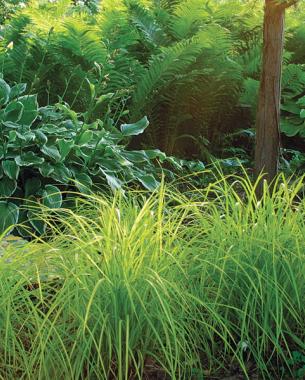
Name: Carex elata ‘Aurea’
Zones: 5–9
Light: Full sun to light shade
This popular, eye-popping sedge has upright, 14-inch-wide, chartreuse to bright yellow foliage that gets 24 to 30 inches tall. It does not tolerate dry soil, and its leaves become brighter in full sun.
Uses: Bowles golden sedge adds an energizing burst of color in any shade planting or creates a dynamic contrast with purple-flowering, sun-loving perennials. Pair it with winged loosestrife (Lythrum alatum, Zones 3–9), Geum ‘Flames of Passion’ (Zones 5–9), or interrupted fern (Osmunda claytoniana, Zones 2–10).
‘Gold Fountains’ sedge has an arching habit
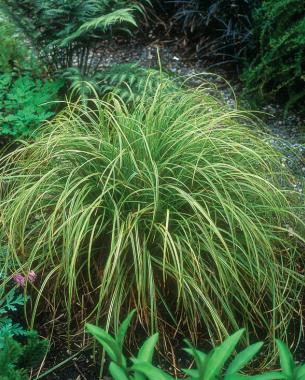
Name: Carex dolichostachya ‘Gold Fountains’, syn. C. dolichostachya ‘Kaga-nishiki’
Zones: 5–9
Light: Full sun to full shade
This softly mounding sedge boasts sharply defined, gold edges along its arching, 14-inch-wide, emerald green leaves. It grows to 20 inches high and prefers well-drained, fertile soil. In our Zone 5 climate, it can lose its vigor after a tough winter.
Uses: ‘Gold Fountains’ adds vibrant color and shimmering texture to plantings. Well-matched shade companions include bleeding heart (Dicentra spectabilis, Zones 3–9), hostas (Hosta spp. and cvs., Zones 3–9), and foam flowers (Tiarella spp. and cvs., Zones 3–9).
Seersucker sedge sports puckered leaves
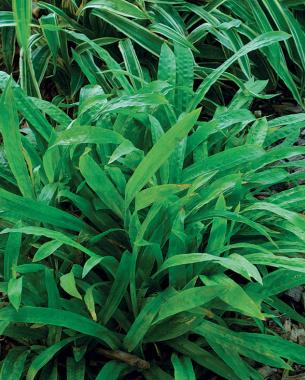
Name:
Carex plantaginea
Zones: 5–7
Light: Full sun to partial shade
This sedge produces 1½-inch-wide, dimpled, green leaves that resemble the puckered cloth from which it gets its common name. It forms tight clumps up to 9 inches high. Seersucker sedge performs best in well-drained soil.
Uses: This sedge makes a good filler plant in woodland gardens. Combine it with hardy geranium (Geranium × cantabrigiense, Zones 5–8), heucherella (× Heucherella ‘Burnished Bronze’, Zones 4–8), and marginal wood fern (Dryopteris marginalis, Zones 3–8).
Blue sedge forms soft drifts

Name: Carex flacca, syn. C. glauca
Zones: 5–9
Light: Full sun to light shade
Blue sedge has long, narrow, pale blue foliage that lightly settles upon itself, creating a soft, layered mound up to 15 inches high. It spreads by rhizomes at a manageable rate. This sedge likes to be dry and will die in wet soil.
Uses: Blue sedge prefers full sun. Grow it with big betony (Stachys macrantha ‘Hummelo’, Zones 7–9) and salvia (Salvia nemorosa ‘Wesuwe’, Zones 5–9), which rise vertically through the sedge’s arching foliage. In light shade, pair it with bigroot geranium (Geranium macrorrhizum ‘Bevan’s Variety’, Zones 4–8).
Pennsylvania sedge works as a ground cover
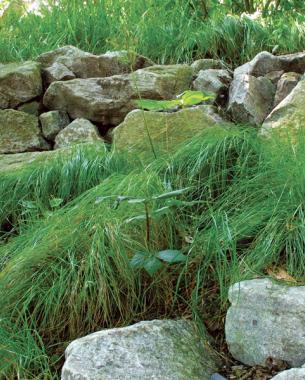
Name:
Carex pensylvanica
Zones: 4–8
Light: Full sun to full shade
The fine-textured foliage of this sedge creates a softly arching effect. It spreads by rhizomes, but not densely, to form a low, open sod 8 to 14 inches tall. Exceptionally durable and flexible, Pennsylvania sedge flourishes in dry shade and in soil that is moist and rich in organic matter.
Uses: This is a useful backbone for a mixed planting of ground covers. Interplant it with shooting stars (Dodecatheon meadia, Zones 4–8), spotted geranium (Geranium maculatum, Zones 4–8), Jack-in-the-pulpit (Arisaema triphyllum, Zones 4–9), and wild strawberry (Fragaria virginiana, Zones 4–9). The subtle look they create when planted together resembles a naturally occurring plant community. Pennsylvania sedge is also useful in preventing soil erosion on a slope.
Palm sedge adds texture to a planting

Name:
Carex muskingumensis
Zones: 3–8
Light: Full sun to partial shade
This sedge resembles a small palm tree, with its narrow, green leaves arranged around a stem like a palm frond. It grows about 2 feet high and forms nonaggressive clumps. Although it favors moderately moist soil, it also tolerates drier conditions—but only in partial shade. The leaves turn a soft yellow in autumn.
Outstanding cultivars include ‘Oehme’, with gold-edged foliage; ‘Little Midge’, which grows only 10 inches tall; and ‘Wachtposten’, which stays more upright than the species.
Uses: Rely on its unusual foliage to add textural contrast, especially with broad-leaved plants. Amiable companions include Hosta ‘White Triumphator’ (Zones 3–9), skullcap (Scutellaria incana, Zones 5–8), and pointed-leaf tick trefoil (Desmodium glutinosum, Zones 4–9). Another possibility is Bowman’s root (Gillenia trifoliata, Zones 5–9), a woodland native that gets up to 3 feet tall, with maplelike leaves that arch over this sedge.
Fine Gardening Recommended Products
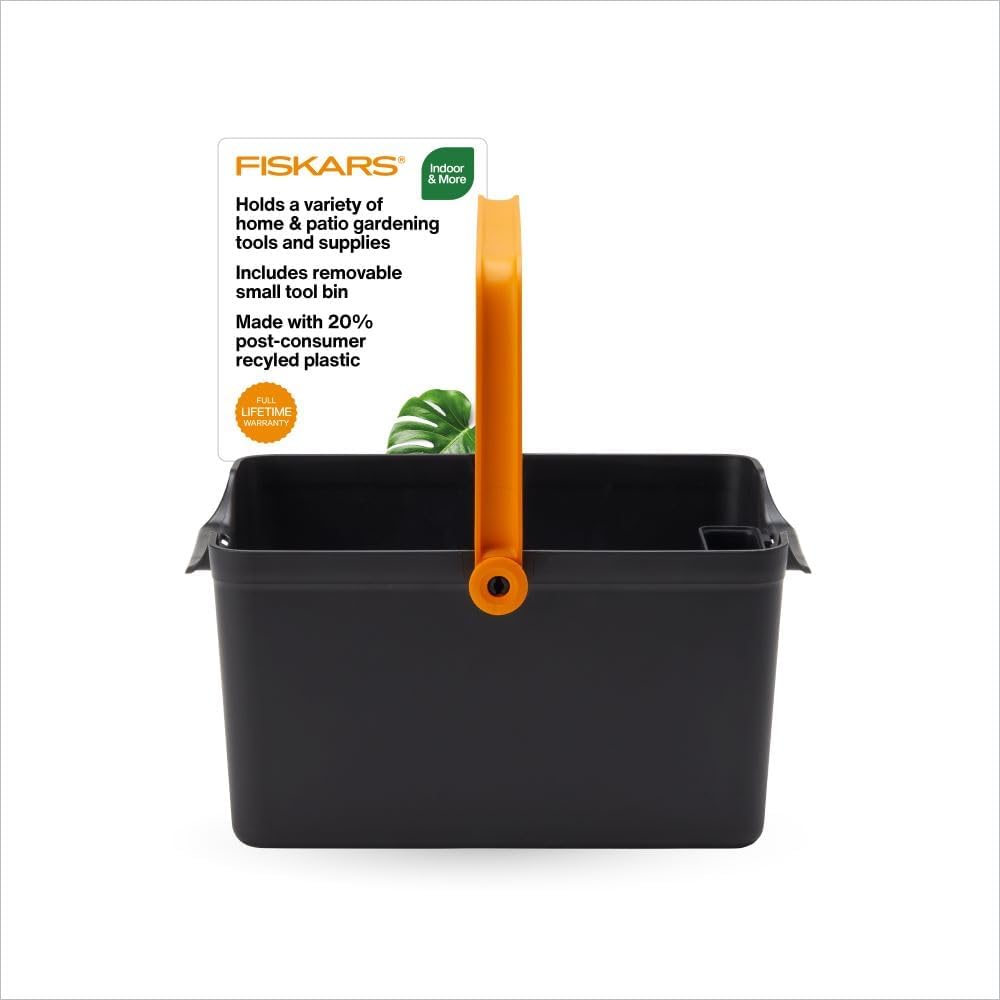
Fiskars Garden Tool Caddy with Removable Small Tool Storage for Indoor and Outdoor Gardening Use, Made with Recycled Plastic
Fine Gardening receives a commission for items purchased through links on this site, including Amazon Associates and other affiliate advertising programs.
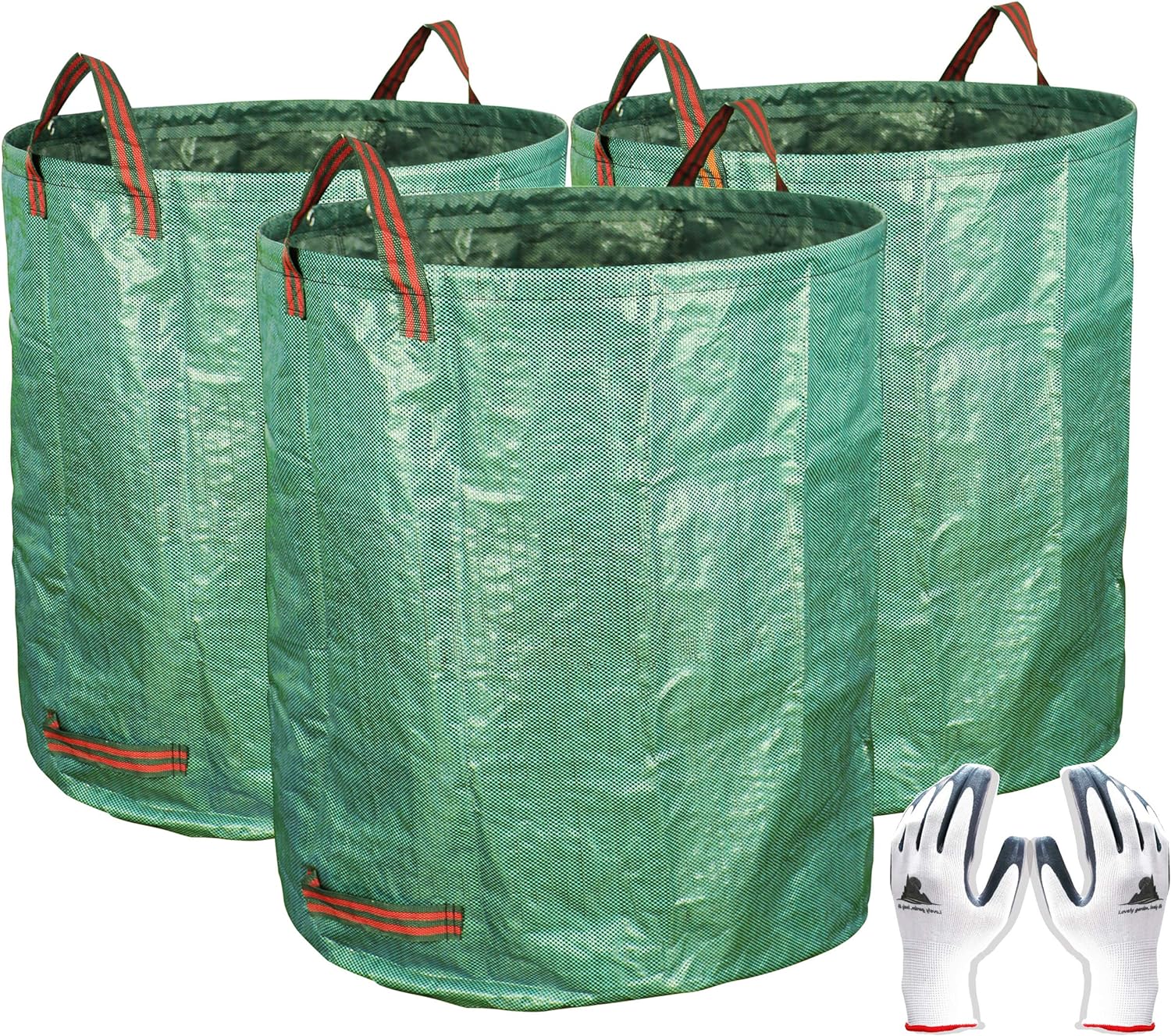
Gardzen 3-Pack 72 Gallons Garden Bag
Fine Gardening receives a commission for items purchased through links on this site, including Amazon Associates and other affiliate advertising programs.
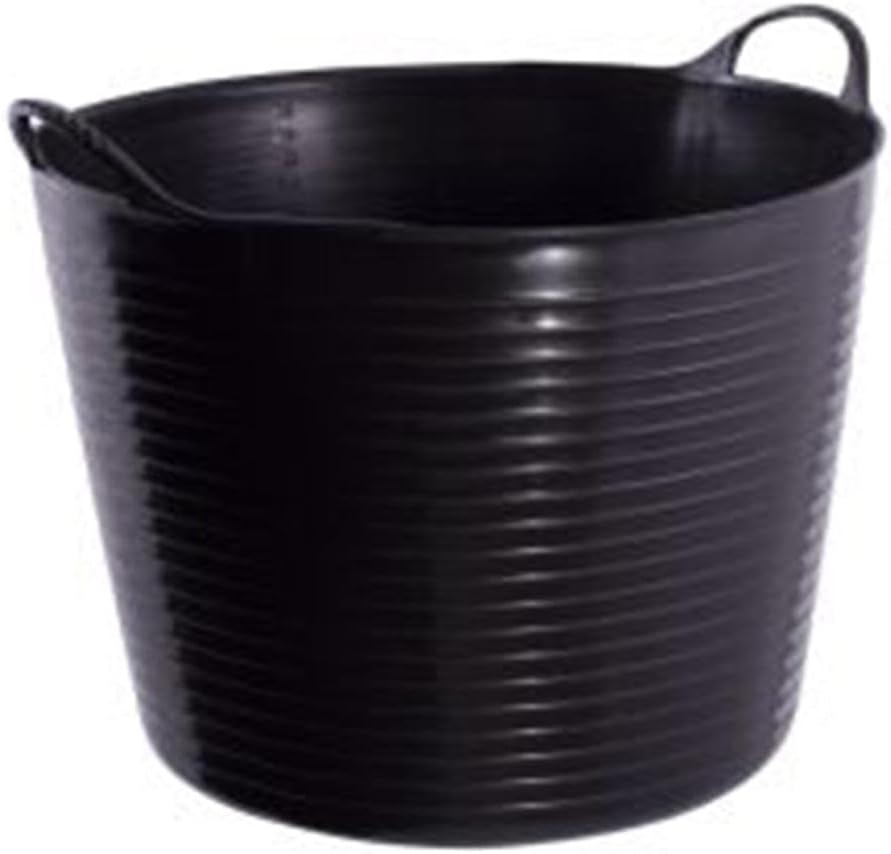
Tubtrugs SP42GBK Flexible Black Gorilla Large 38 Liter/10 Gallon Capacity
Fine Gardening receives a commission for items purchased through links on this site, including Amazon Associates and other affiliate advertising programs.


















Comments
Consider the sedge or carex family to be an early-season grass that lasts all summer. Carex are not only attractive, but they are also hardy, slope unblocked adaptable plants that improve the health of an entire plant community.
I grow Variegata in my garden. This kind of grass make my garden more beautiful. I often play cubes 2048 while enjoying my garden. It is an interesting experience. Believe me.
Log in or create an account to post a comment.
Sign up Log in